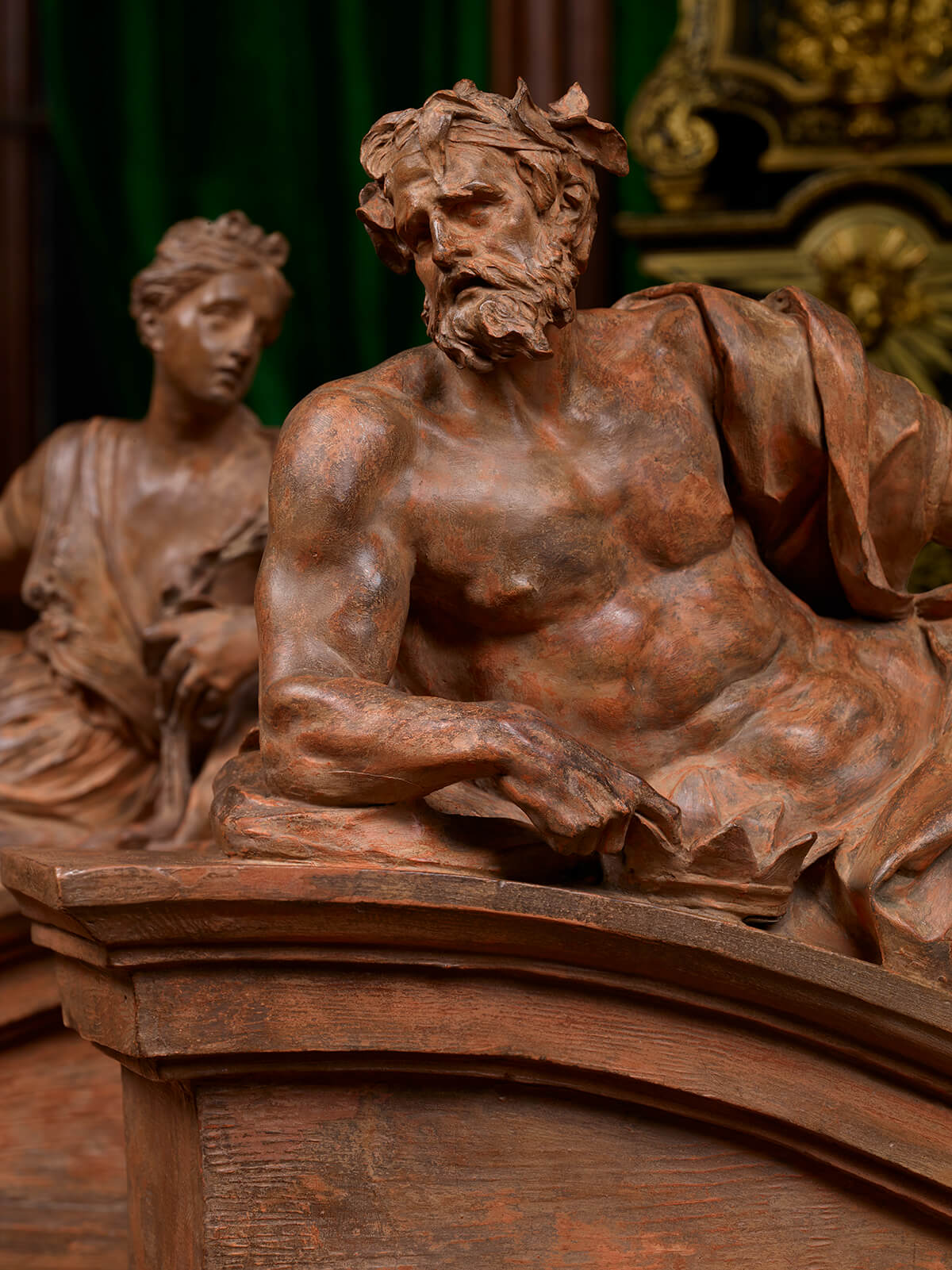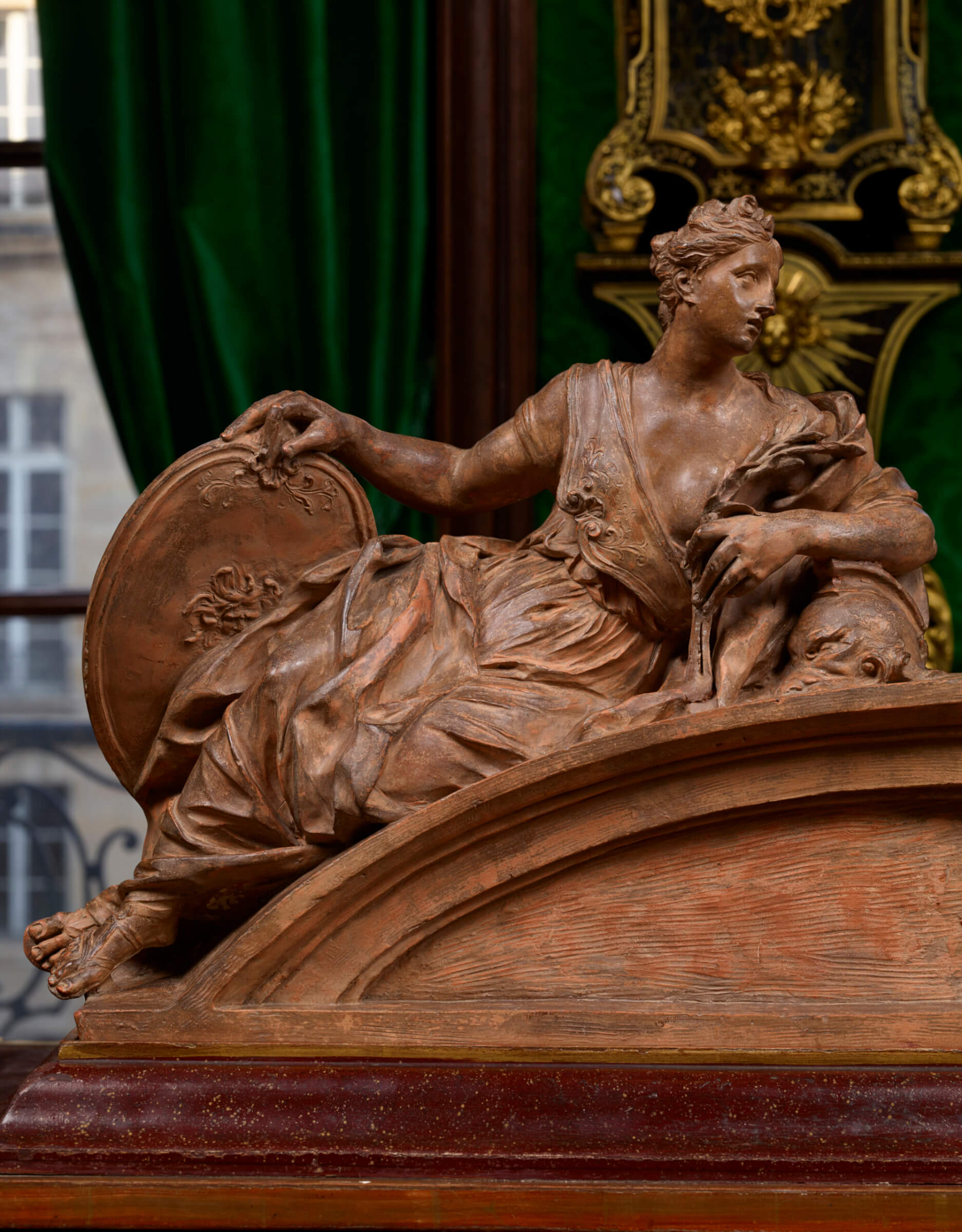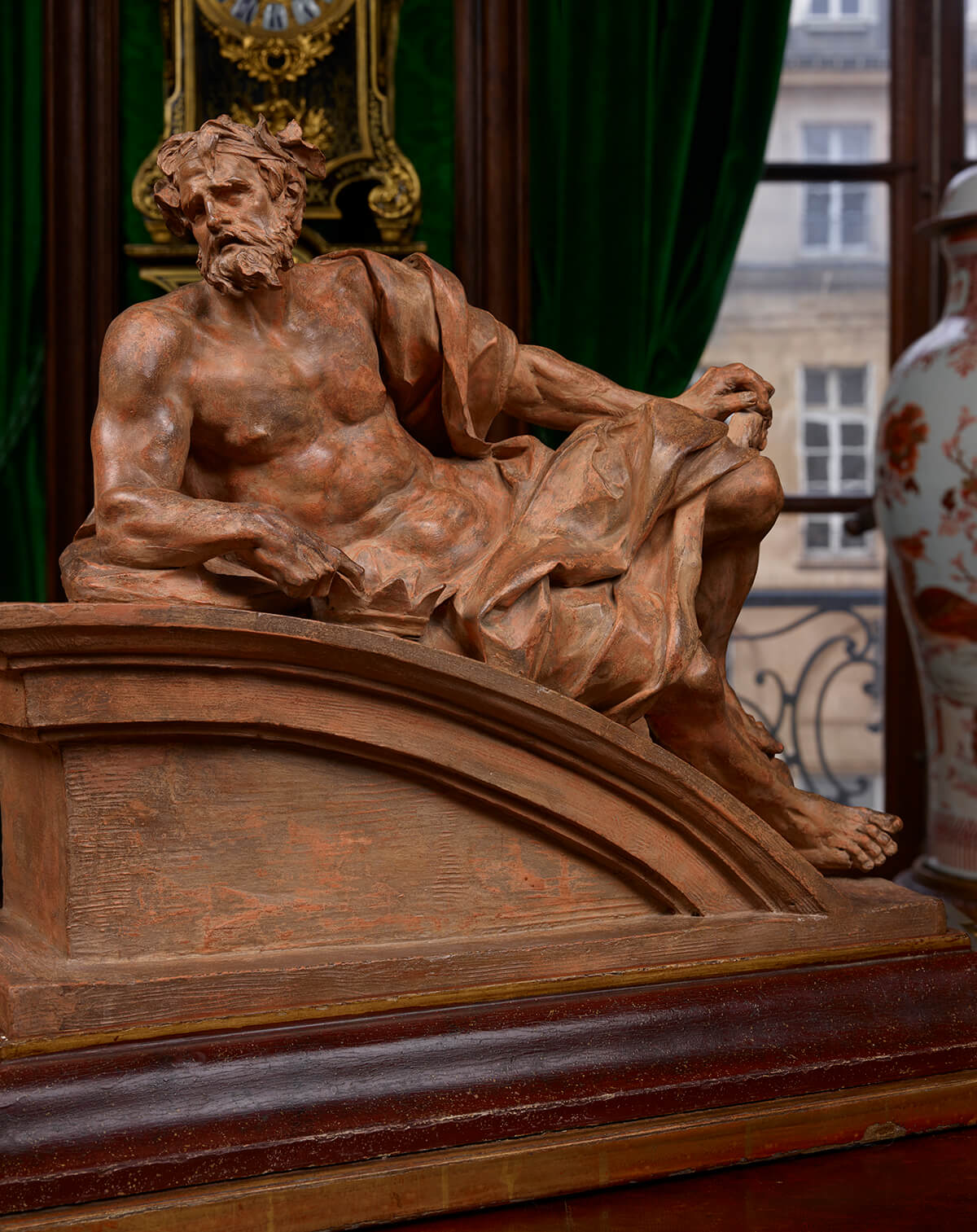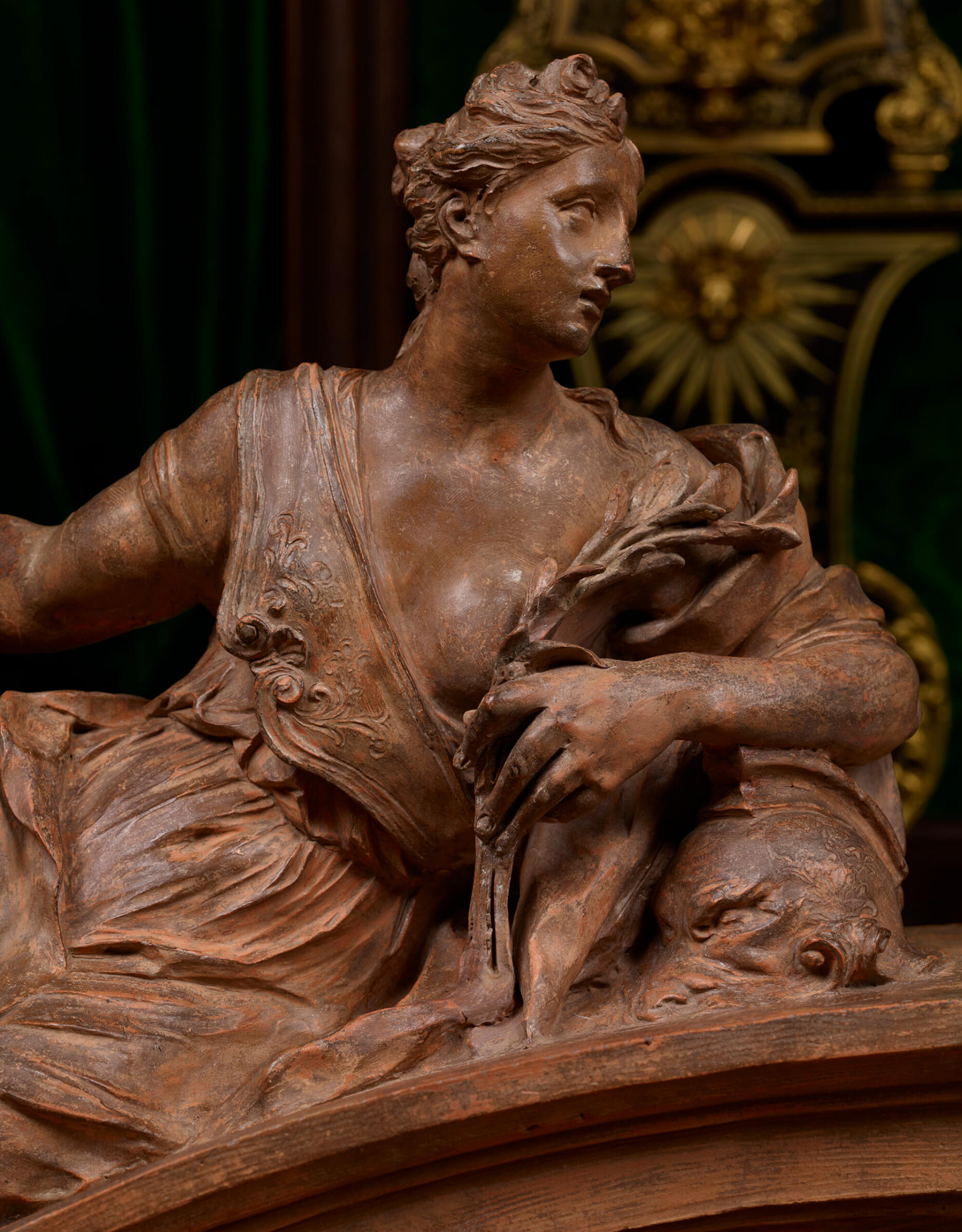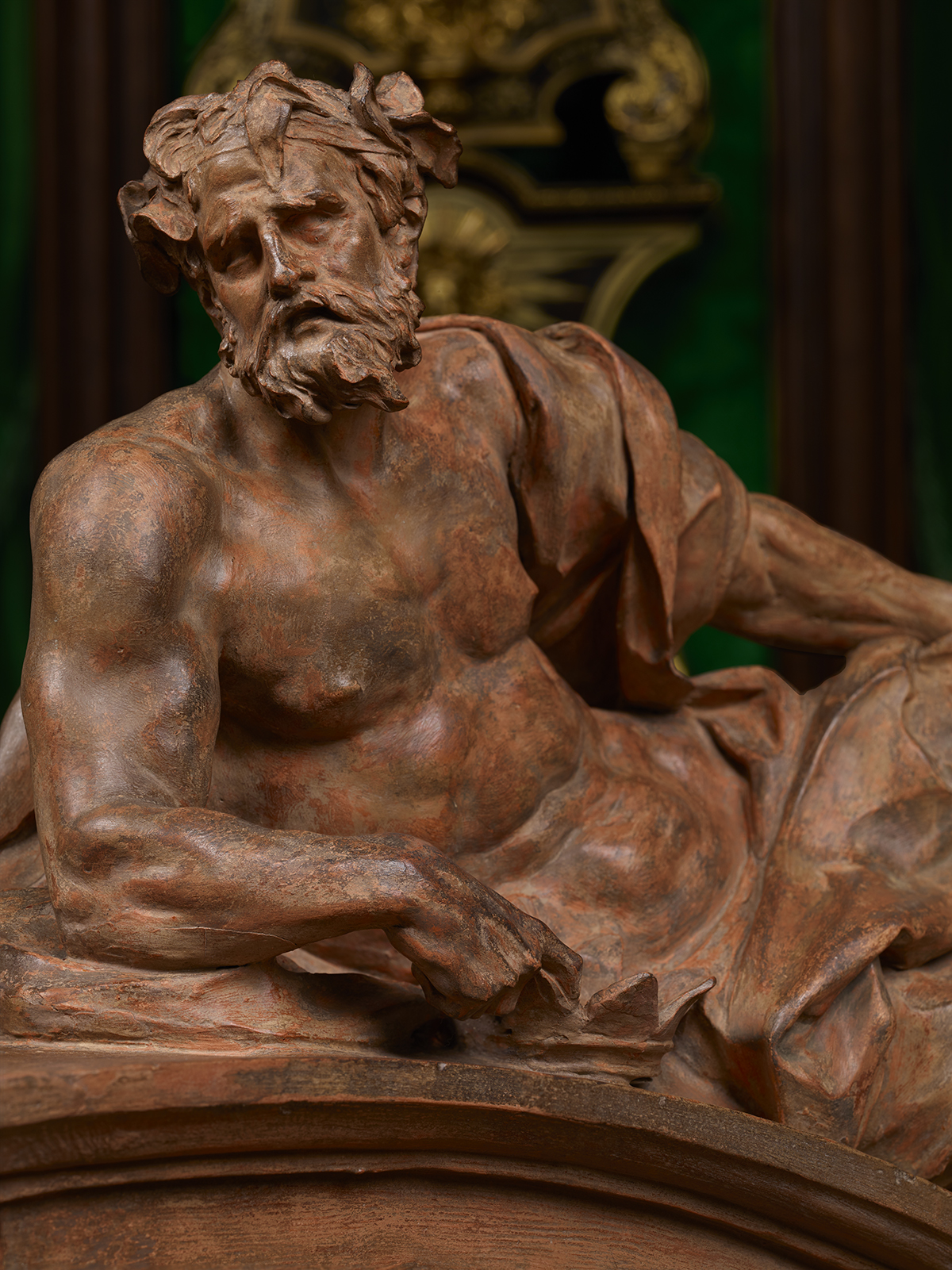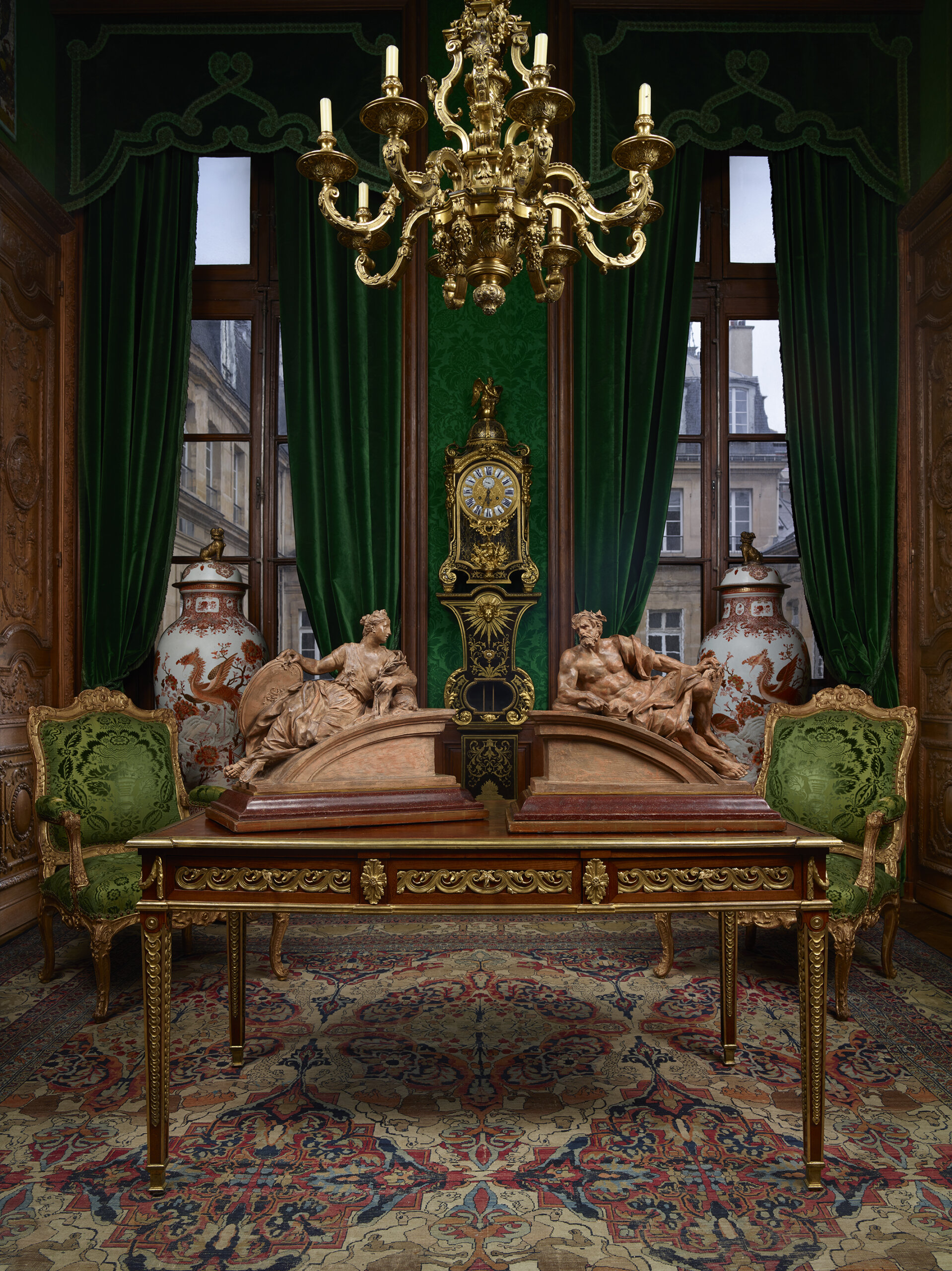

Terracotta.
Ogee bases with moulded and tinted wood; one of them bears an old and incomplete label from the transporter André Chenue on which the address of the Maison can still be read: “5 rue de la Terrasse, Paris”.
Britannia : H. 50 cm. (19 ¾ in.); W. 61 cm. (24 in.); D. 29 cm. (11 ½ in.).
Neptune: H. 52 cm. (20 ½ in.) ; W. 61 cm. (24 in.); D. 31 cm. (12 ¼ in.).
PROVENANCE: executed circa 1730 for Robert Walpole (1676-1745), 1st Earl of Orford, at Houghton Hall, Norfolk, England; personal collection of John Michael Rysbrack (1694-1770); its auction in London, 24th-25th January 1766 by Langford and Son, Great Piazza, Covent Garden, lot No. 32 [25th January] in the section “Models in Terra Cota”: “Two figures, on a pediment, of Neptune and Britannia, for the Earl of Orford [Robert Walpole] at Houghton”; collection of Count Robert Le Coat de Kerveguen(1875-1934) at the Château de Vigny, Val-d’Oise, then collection of his son, Yves Le Coat de Kervéguen (1925-2007); auction in Paris, Drouot-Richelieu, “Provenance du château de… [Vigny]”, Million & Robert, 20th March 1992, lot n° 56, repr.; acquired at the auction by Bernard Steinitz; then private collection.
LITERATURE: Horace Walpole, A description of Houghton-Hall; A sermon on painting: preached before the Earl of Orford, at Houghton, 1742, London, 17(?), p. 263; Marjorie Isabel Webb, Michael Rysbrack, Sculptor, Country Life, 1954, p. 127-128; John Harris, “The Architecture of the House”, in Andrew Moore, Houghton Hall: The Prime Minister, the Empress and the Heritage, London, Philip Wilson Publishers, 1996, p. 23; Adam Sharr (ed.), Reading Architecture and Culture: Researching Buildings, Spaces and Documents, Routledge, 2012, p. 82-83; Jonathan Hill, A Landscape of Architecture, History and Fiction, Routledge, 2016, p. 23-32.
These exceptional terracotta pendant groups, the allegories of Britannia and Neptune, i.e. the personification of Great Britain together with the personification of her maritime power then unequalled in Europe and across the world, have been the subject of in-depth research which has led to the identification of their author as well as the identification of their prestigious acquirer. Both of these imposing terracotta works by John Michael Rysbrack (1694-1770), who was regarded by his contemporaries as one of the finest artists of his time, were executed circa 1730 after drawings by William Kent (1685-1748) for Sir Robert Walpole (1676-1745), the 1st Earl of Orford and now recognised as the first true “Prime Minister” of Great Britain.
These works, which are endowed with considerable political significance and symbolise the omnipotence of a man then at the height of his power, are not modelli but very elaborate, well-finished sculptures that were executed at a very advanced stage of the design process.
